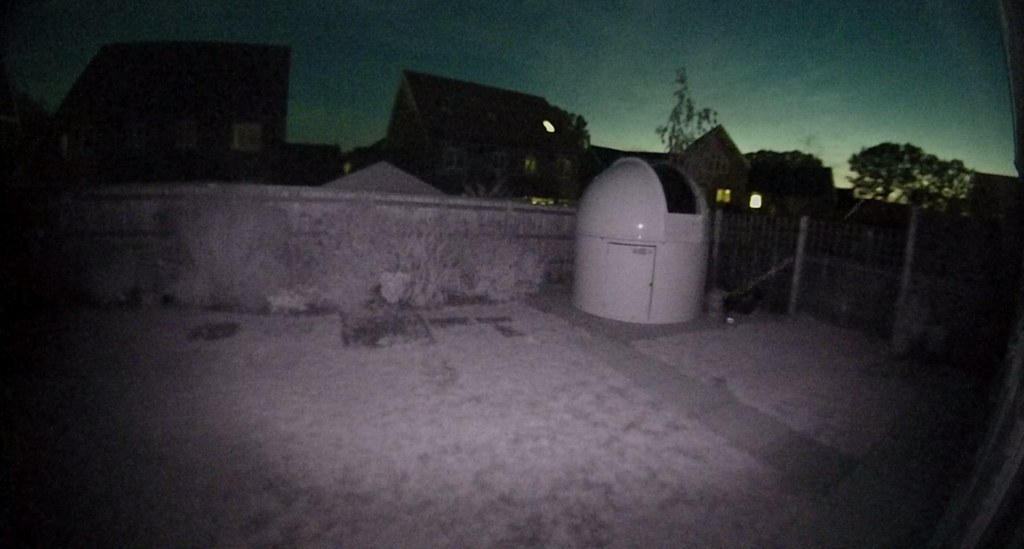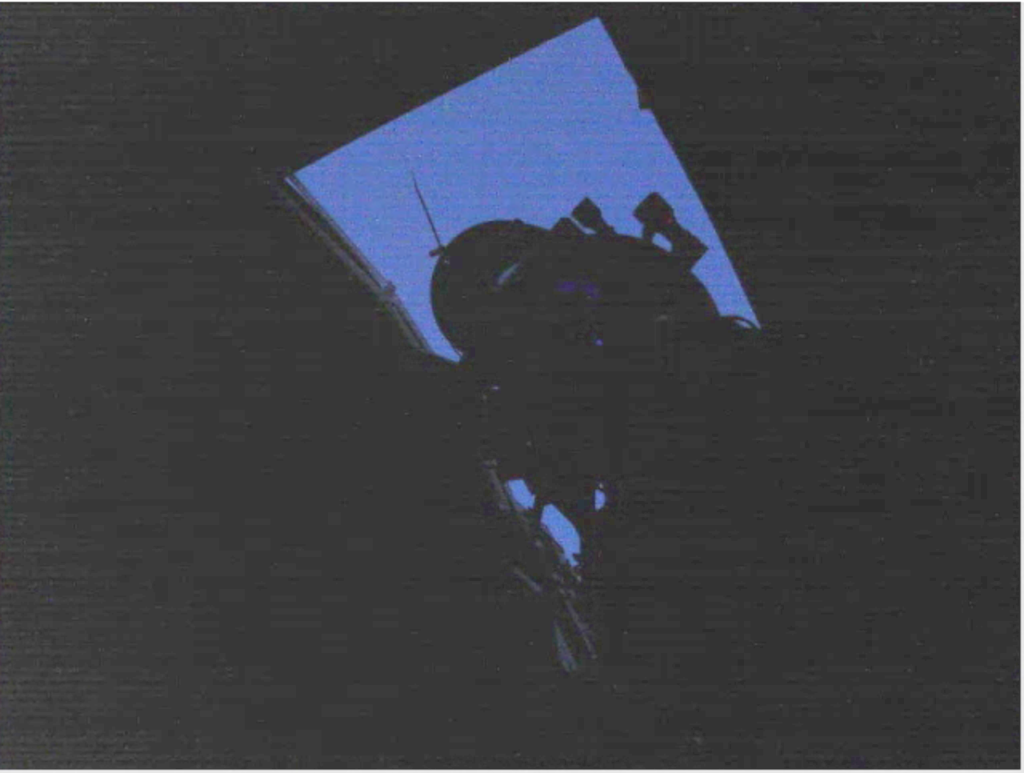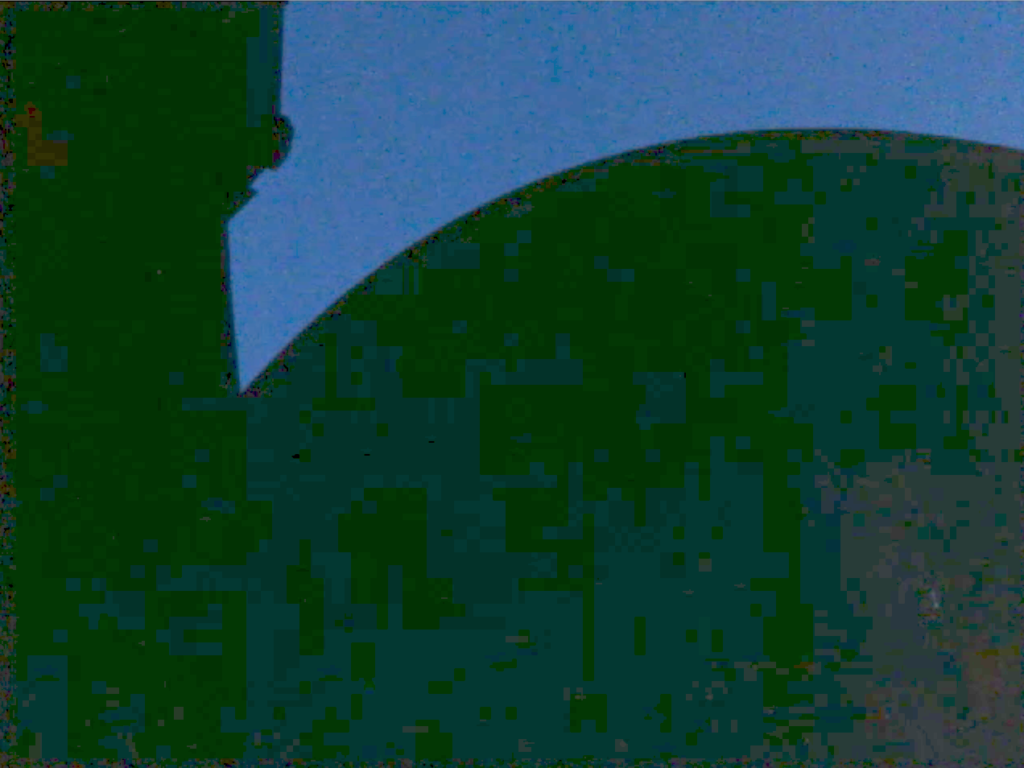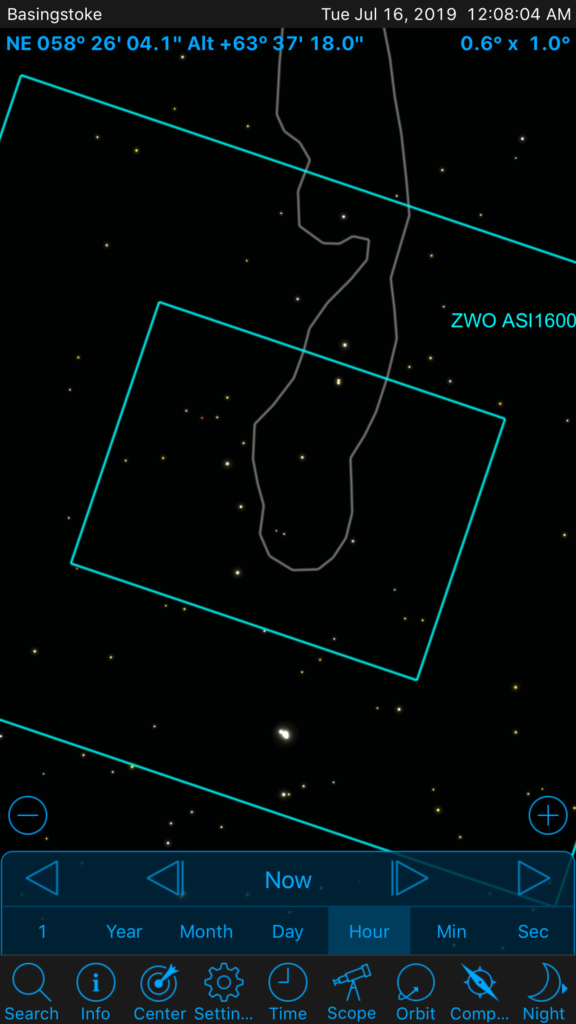Viewing time period – 21:32 – 23:48
Tonight was about taking 5 and 10min guided Ha exposures on the Elephant Trunk, IC1396. Even though the Moon is 99% full I wanted to see what the resulting star shape was now we have guiding in place.
As usual the first thing to do was open the dome, Find home on the mount and then slew to a nearby star, sync and then slew to the Elephant Trunk. The operators manual has been updated to the following but I noticed an error in that opening the dome profile disconnects the mount so I will modify the instructions. I also changed the setting for moving the telescope manually within TSX to swap the arrow keys around, this affords a much more natural experience when having to manually move the scope for one reason or another.

I then checked through Sharpcap that the shutter was open and the scope pointing through it using 3 different cameras.
I then took a single frame through the Ha filter to see if I was in the right position.
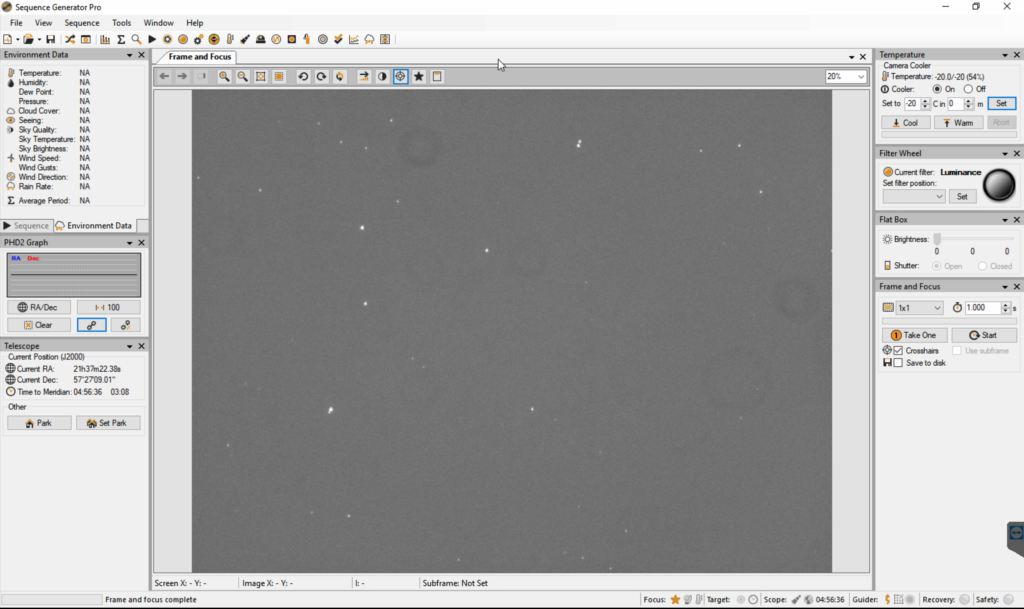
I measured this against the known star pattern in TSX and then using SkySafari on my iPhone I positioned the FoV to include the front of the trunk in the camera and then manually moved the equivalent FoV indicator in TSX to match the star pattern.
Once they were matched I decided not to go through the whole refocus this evening as the Moon would ruin any image I took, instead I checked the star tightness of focus using the HFD function in SGPro. The resulting star sizes were fine for this evening even though I was focused through the luminance filter before at position 71290. Stars are always more bloated through narrow band filters anyway.
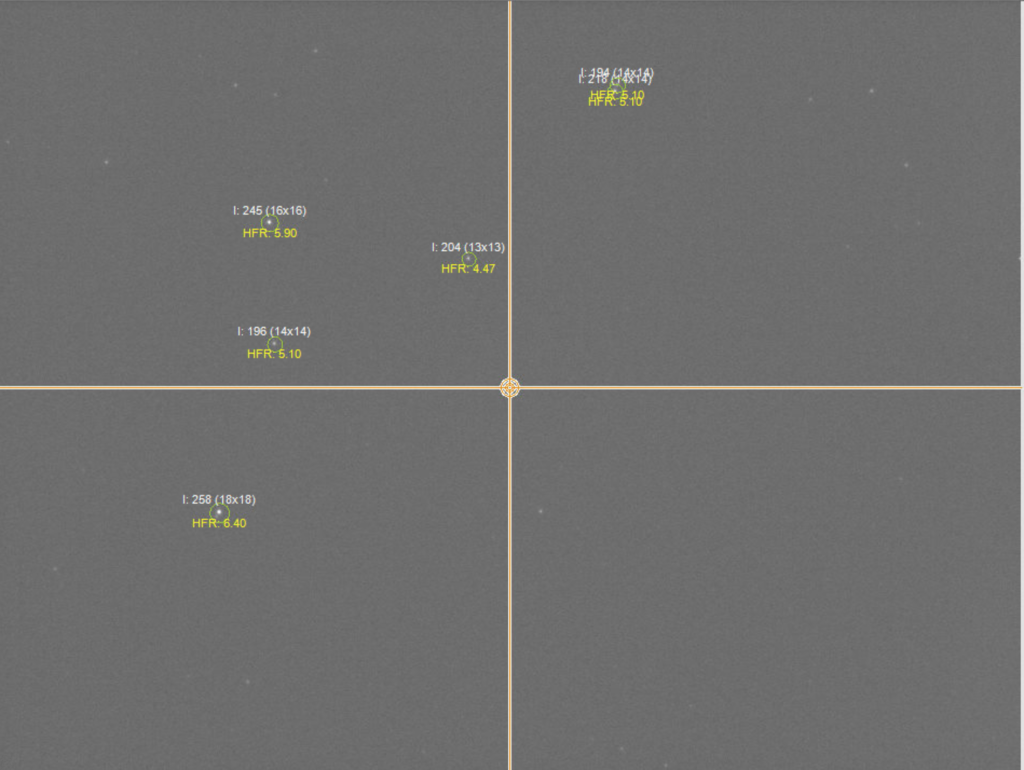
I then moved to opening PHD2 within SGPro and selecting a guide star, although I did have to move the image slightly to find one tonight, again bright Moon.
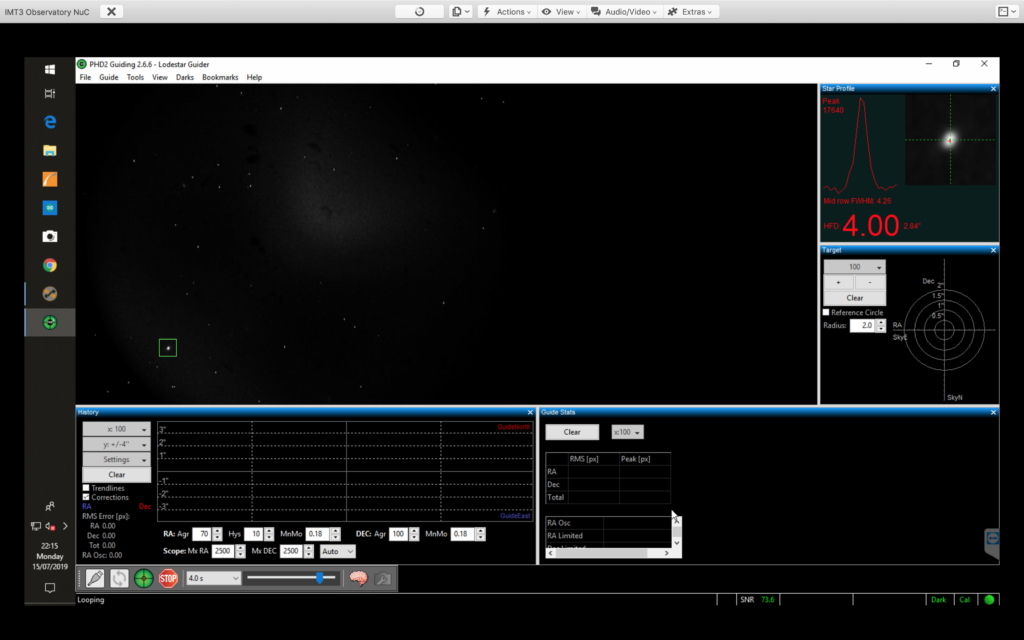
GingerGeek and Bob were online and GingerGeek offered advice around switching on the environmental monitor that I had forgot about. This would pull data in from the HiTech Weatherstation to add to each image.

I then upped the exposure to 120 seconds, that worked well, nice round stars, then 300 seconds, again tight stars, then I took 3 images at 600 seconds. The background by this point was getting brighter due to the Moon. I had the camera (ASI1600MM) set to -20℃ below the ambient of 14℃ and it was running as can be seen below at 55%. All the images were take with Frame and Focus. GingerGeek then took over and showed me how to use Sequence and we ran into another problem. It would not let us run a sequence, it would error and complain about not being able to connect to the observatory.
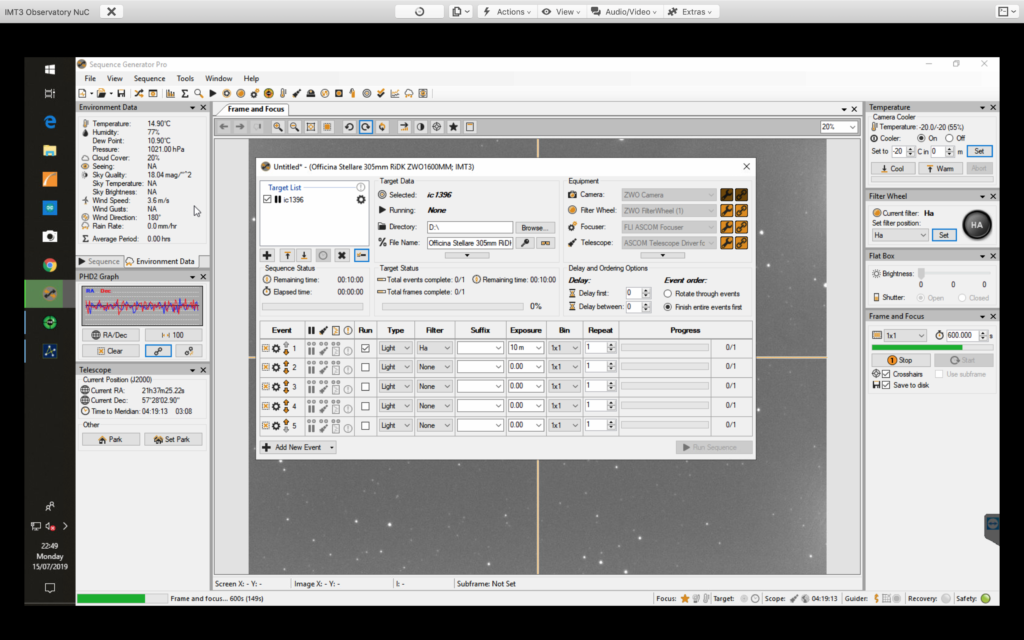
A quick Google showed this to be a bug in SGPro, still not fixed and needing to be brought the their attention. We had originally setup the dome to rotate within SGPro, found it not very easy or very good, moved to TSX to control the dome which was easier and much better and unselected within SGPro, However because we had checkboxes ticked that the dome should be rotated in line with the mount pointing it was complaining, even though we explicitly said no dome attached. So unticking this setting worked, although we inadvertently then hung SGPro as it went to perform a focus run, I did not want it to do that, on hitting abort that hung SGPro. We needed to approach Taks Manager to resolve that.
So that was that and I then awoke this morning to pull the files down using the transfer function within Teamviewer. There are 2 was to do this, the other way , not documented here does not allow for field over 25MB to be sent, however selecting File Transfer from the pages icon at the top does.


So what does a single 10min uncalibrated frame with nearly a full Moon look like?
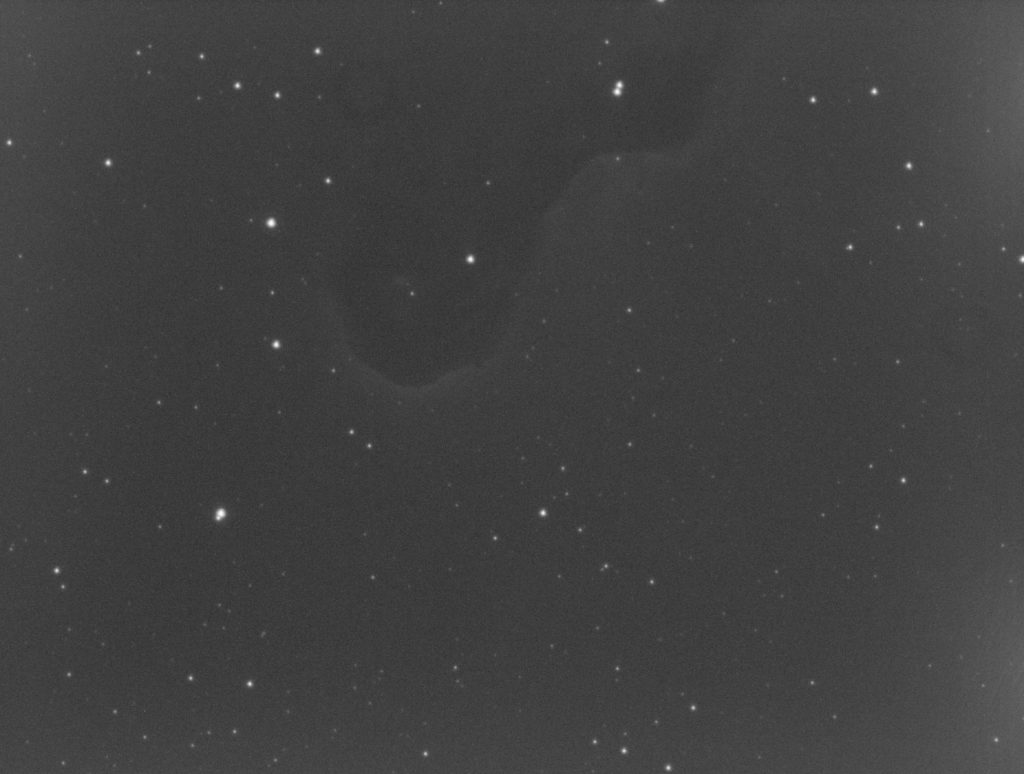
And we have to remember this has not been calibrated, so not Darks, no Flats, for sure no Bias and no processing apart from a stretch to visualise the data. It is pretty smooth as a first light image! So what do 3 of these look like stacked?
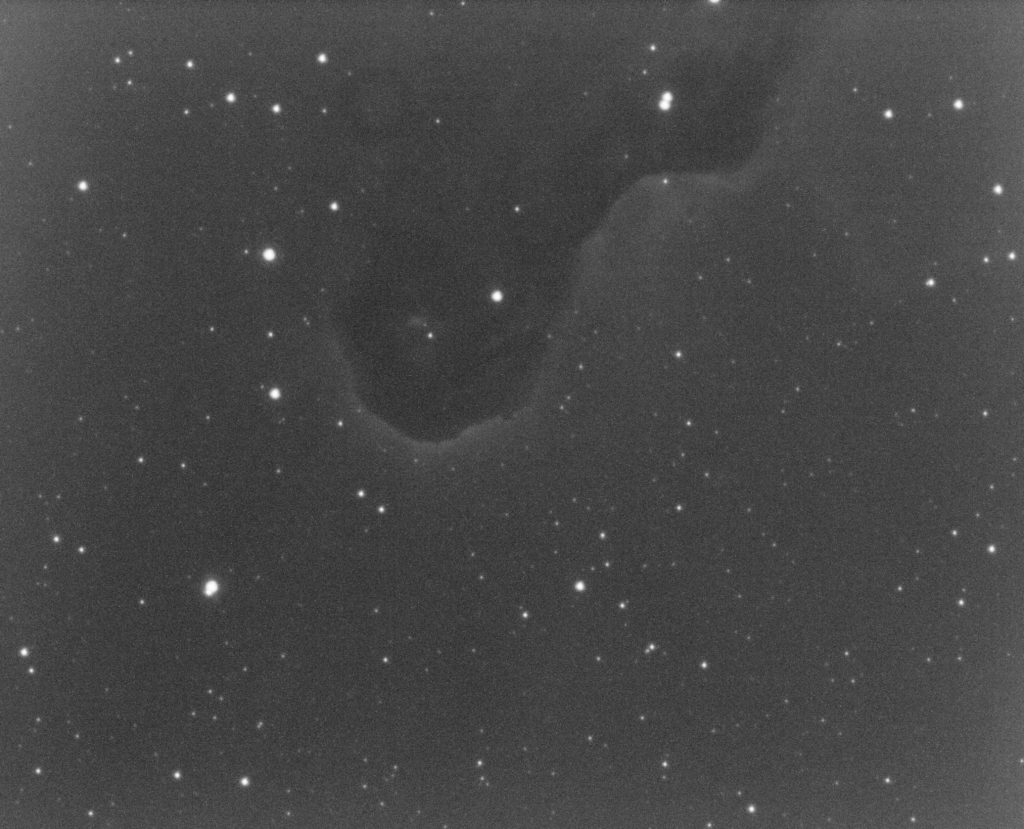
Wow, I actually think this is going to be a cracking setup. Again no pre-processing, clearly there are doughnuts to be removed from a flat which is no big deal, well apart from I need to install the A2 flat sheet I have in the dome and in a position the scope can see. Also I will move the end of the nose of the trunk further toward the bottom to get more nebula in. So a good first light test. Now we can test the Esprit 120 ED with the SX814 on the next night. Goodnight zzzzz ……
